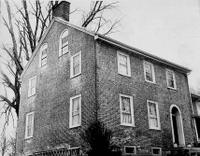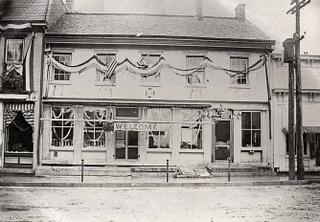The Eli Harvey Homestead, article by Christine Hadley Snyder
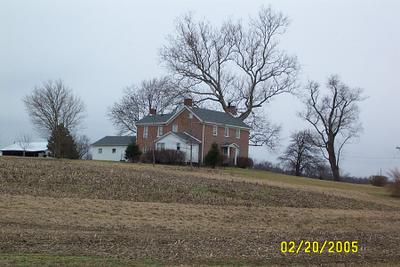 The Harvey~Hadley Homestead on the Wilmington-Lebanon Pike, RR #1 in Clinton County, Ohio was built around 1824 by Eli Harvey (1803-1872). The house was listed on the National Register of Historic Places in 1978.
The Harvey~Hadley Homestead on the Wilmington-Lebanon Pike, RR #1 in Clinton County, Ohio was built around 1824 by Eli Harvey (1803-1872). The house was listed on the National Register of Historic Places in 1978. The families of Elizabeth’s son William Harvey and of her daughter Martha Harvey Hale came the following year, 1807. The land was divided, homes were built, and soon the "Harvey Settlement" was a thriving community. The first log schoolhouse was erected in 1808 on Isaac Harvey’s farm. In 1809 an indulged meeting of Friends was held in this schoolhouse. Isaac gave land for a meetinghouse and burial plot, and the first building was erected in 1812.
William Harvey’s farm of 650 acres lay south of the Wilmington-Lebanon Pike. His home was on the west bank of Todd’s Fork. Eli (1803-1872) was the only one of his children to locate permanently in this neighborhood. Piece by piece, Eli bought land until he owned nearly all along the pike for about two miles west from Todd’s Fork. The site he selected for his own home was about a mile west of the creek. He burnt brick and built a substantial home on high ground aback from the road.
A year after his wife Sarah’s death, Eli asked for his certificate to Miami Monthly Meeting that he might go there to marry Ruth Fisher. Ruth Fisher lived with her brother, one of two doctors who took up residence in Waynesville. Here too, she taught school fro 25 cents a day. (Ruth was one of the sisters of Drs. Isaac, Elias and Sylvanus Fisher who were physicians in Waynesville. Sylvanus Fisher with the help of Elias and other people of good will founded the Waynesville Academy in 1844.) Just a year later, Ruth Fisher Harvey had the first of her six children, four of whom survived to maturity: Hannah, John (Alta Harvey Heiser’s father), James, and Sina. As all these children grew up, they lived as one united family. In their later years Eli’s parents, William and Mary Vestal Harvey, lived in their little house on this farm.
Electricity was installed the next year. Herbert purchased all of it in 1946. About 1948 they remodeled the kitchen, and added a bathroom and sunroom and a coal furnace. The woodhouse was taken down and a garage built in its place. The back porch was rebuilt. A new entry portico was put on the front. A few years later, the “back room” above the kitchen was remodeled and divided in to two bedrooms.
Herbert and Lucile Hadley lived in the house from May 1938 until Herbert’s death in 1991, nearly 53 years. They raised five children: Mary Ellen (Krisher), Harriett (Clark), Christine (Snyder), Anna Jean, and Herbert Jonathan. The four daughters were born in the house. Herbert Jonathan farmed the land with his father for several years before moving into a business career. After Lucile’s death in 1997, her four daughters became the joint owners of the farm, the seventh generation of the family to own this land since 1806.



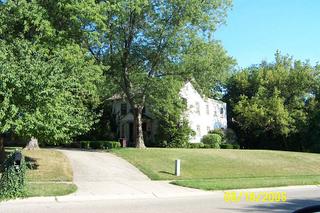
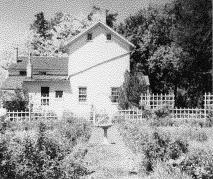
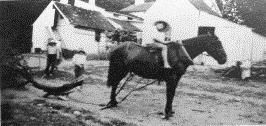


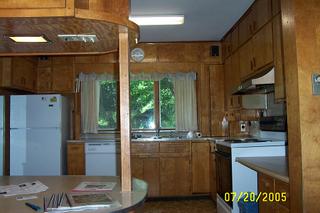
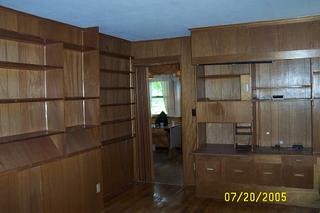





 Aaron B. Chandler
Aaron B. Chandler




